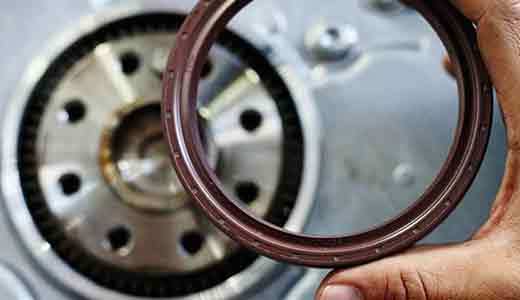Popular Information
Add: Yongkang st.renxian,xingtai city,hebei province china.054000
Tel:+86-319-7566977 7519805
Phone : +8613903298188
Fax:+86-319-7566976
E-mail :richard@bxseals.com
Understanding Hydraulic Seals: Essential Components for Industrial Applications
Release Time:
Nov 09,2025
Hydraulic seals play a crucial role in ensuring the smooth operation of various industrial equipment. These components are designed to prevent fluid leakage and contamination, thereby maintaining the efficiency and longevity of hydraulic systems. Understanding hydraulic seals is essential for professionals involved in the design, maintenance, and operation of machinery in sectors such as manufactu
Hydraulic seals play a crucial role in ensuring the smooth operation of various industrial equipment. These components are designed to prevent fluid leakage and contamination, thereby maintaining the efficiency and longevity of hydraulic systems. Understanding hydraulic seals is essential for professionals involved in the design, maintenance, and operation of machinery in sectors such as manufacturing, construction, and automotive.
There are several types of hydraulic seals, each tailored to specific applications and operational conditions. Common types include O-rings, rod seals, piston seals, and backup rings. O-rings are versatile and used in many applications due to their simple design and effective sealing capabilities. Rod seals are employed to prevent leakage along the piston rod, while piston seals are designed to seal the gap between the piston and the cylinder wall. Backup rings are often used in conjunction with other seals to enhance their performance by preventing extrusion under high pressure.
The selection of the right hydraulic seal involves considering various factors such as the type of fluid, operating temperature, pressure conditions, and the specific geometry of the application. The material of the seal is also critical; options include rubber, polyurethane, and various engineered plastics, each offering unique properties that suit different operational environments. For instance, Nitrile rubber is commonly used for its excellent resistance to petroleum oils, while fluorocarbon seals provide superior performance in high-temperature applications.
Proper maintenance of hydraulic seals is vital to prolong their lifespan and ensure optimal performance. Regular inspections should be conducted to identify signs of wear, contamination, or damage. It is essential to maintain the cleanliness of the hydraulic system, as contaminants can significantly affect seal performance. Additionally, ensuring that seals are installed correctly can prevent premature failure, which often results from improper alignment or excessive force during assembly.
In summary, hydraulic seals are indispensable components in industrial applications, serving as barriers against fluid leaks and contamination. A thorough understanding of the types, materials, and maintenance practices related to hydraulic seals can help professionals ensure the reliability and efficiency of their hydraulic systems. By making informed decisions about seal selection and maintenance, industry professionals can enhance equipment performance and reduce downtime, ultimately driving operational success.
There are several types of hydraulic seals, each tailored to specific applications and operational conditions. Common types include O-rings, rod seals, piston seals, and backup rings. O-rings are versatile and used in many applications due to their simple design and effective sealing capabilities. Rod seals are employed to prevent leakage along the piston rod, while piston seals are designed to seal the gap between the piston and the cylinder wall. Backup rings are often used in conjunction with other seals to enhance their performance by preventing extrusion under high pressure.
The selection of the right hydraulic seal involves considering various factors such as the type of fluid, operating temperature, pressure conditions, and the specific geometry of the application. The material of the seal is also critical; options include rubber, polyurethane, and various engineered plastics, each offering unique properties that suit different operational environments. For instance, Nitrile rubber is commonly used for its excellent resistance to petroleum oils, while fluorocarbon seals provide superior performance in high-temperature applications.
Proper maintenance of hydraulic seals is vital to prolong their lifespan and ensure optimal performance. Regular inspections should be conducted to identify signs of wear, contamination, or damage. It is essential to maintain the cleanliness of the hydraulic system, as contaminants can significantly affect seal performance. Additionally, ensuring that seals are installed correctly can prevent premature failure, which often results from improper alignment or excessive force during assembly.
In summary, hydraulic seals are indispensable components in industrial applications, serving as barriers against fluid leaks and contamination. A thorough understanding of the types, materials, and maintenance practices related to hydraulic seals can help professionals ensure the reliability and efficiency of their hydraulic systems. By making informed decisions about seal selection and maintenance, industry professionals can enhance equipment performance and reduce downtime, ultimately driving operational success.
Key words:



